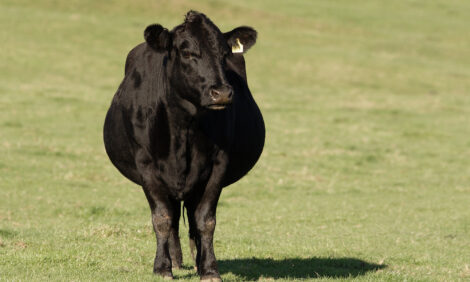



Mexico Livestock and Products Semi Annual 2009
Red meat consumption is forecast to decline in 2009 as middle and lower income consumers are expected to replace consumption of red meat for cheaper processed meat and other protein sources, reports the USDA Foreign Agricultural Service.Despite the reduction in consumption, 2009 red meat production is not expected to decline dramatically. However, 2009 red meat imports from the U.S. are forecast to decline in large part to the fall in the value of the peso relative to the U.S. dollar.
The current economic crisis, leading to a reduction in family income, is expected to lower beef consumption. The estimate for beef imports for 2009 was revised downward due in large part to the increased price of imported meat caused by the higher exchange rate.
Despite the contraction in beef consumption, cattle inventories and production for 2009 were revised upward from the previous estimate as a consequence of expected lower cattle exports to the United States.
Slaughter figures for 2009 were revised downward also reflecting lower consumption and the increase in beef prices. However, slaughter figures for 2008 were revised upward due to the government subsidies given to TIF establishments during the year.
Narrative on Supply, Demand, Policy and Marketing
Production
Cattle production for 2009 was revised slightly upward due to the producer’s expectations of greater live animal exports to the U.S. and increased opportunities to export beef to Asian markets, both as a result of the devaluation of the peso. The 2008 cattle production forecast has been revised downward from the previous estimate, though it is still about 0.4 percent higher than the 2007 level. The change reflects the higher cost of production due to the increased cost of feed grains.
The 2009 beginning stocks estimates for dairy and beef cows were revised downward following the release of official data from the Secretary of Agricultures statistical service (SIAP1). At the same time, data for 2008 and 2007 were revised, dairy cow stocks upward, and beef cows stocks downward, also in accordance with SIAP estimations.
The 2009 total cattle inventories have been revised upward as a result of lower cattle exports and a reduction of beef consumption despite lower cattle imports. The 2008 cattle inventory number was revised upward according to official data.
Beef production for 2009 was revised downward, reflecting expected decline in consumer demand resulting from the economic downturn. On the other hand, beef production was adjusted slightly downward for 2008 and upward for 2007 to match official data.
In spite of a one-percent increase in slaughtering for 2009, the beef production estimate is forecast at the same level as the revised 2008 production figures due to lower carcass weights at slaughter as a consequence of feeding animals using cheaper feed and more grazing due to higher feed grain prices.
If the international price of grains fall and/or the peso begins to strengthen, greater production of red meat for the second semester of 2009 could be observed. However, the recovery of red meat consumption in Mexico will be slower.
The industry has many investment projects to open new plants and facilities to process meat, expanding production capacity. However, the current economic instability is forcing a review of these kinds of projects in order to maintain only those projects that are viable in the short term.
Consumption
The 2009 beef consumption estimate was revised downward reflecting an estimated reduction in consumption of 3 percent less than the new estimate for 2008 (also revised downward). The economic slowdown; the increase of beef prices, particularly imported cuts due to the exchange rate; the reduction of family income ; and the higher substitutability of beef meat are all factors in the reduction in beef consumption.
Trade
In general, the importation of red meat to Mexico has been declining since December 2008 due to the international economic slowdown that not only is affected by the exchange rate, but also is reducing the consumption of red meat (principally higher-priced beef cuts). On the other hand, SAGARPA data shows that Mexican red meat exports to Japan are growing, helped in part by the devaluation of the peso.
The 2009 beef import estimate was revised lower and is now expected to show a decline of between 15 and 20 percent from 2008. The principal causes are more expensive importation due to the dollar-peso exchange rate and decreased demand due to the sluggish economy. The 2008 import estimate was also revised downward reflecting the devaluation of the peso in the last quarter of the year.
Further Reading
| - | You can view the full report by clicking here. |
List of Articles in this series
To view our complete list of Livestock and Products Annual, and Semi-Annual reports, please click hereMarch 2009


